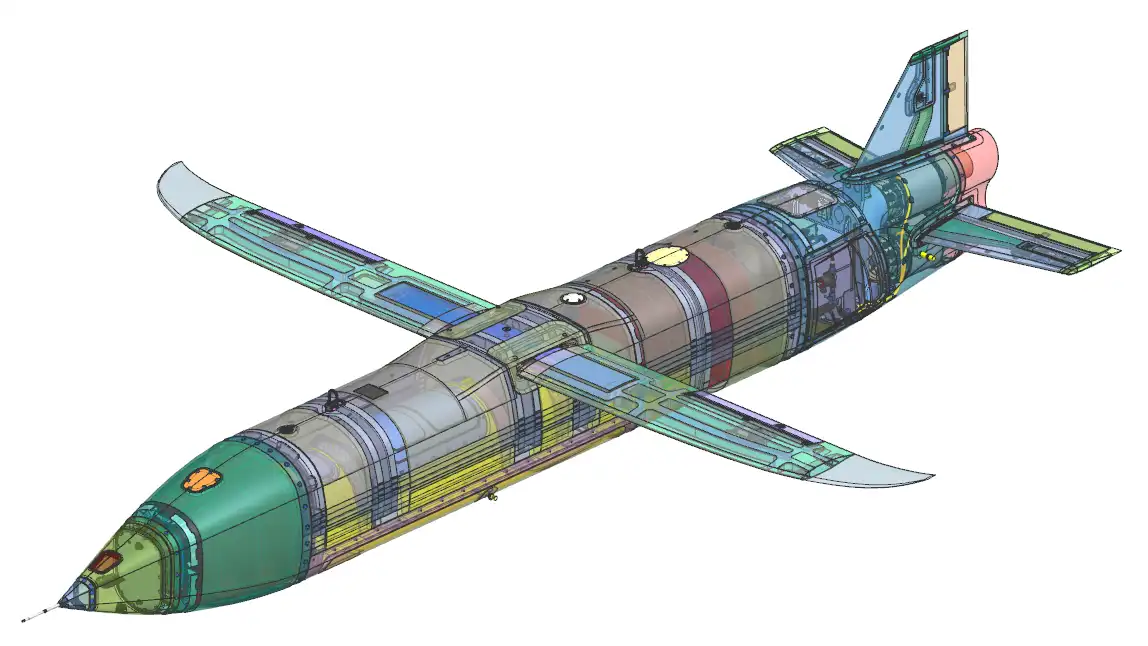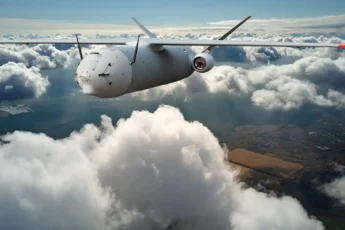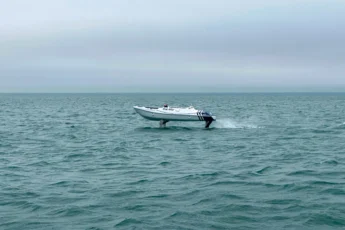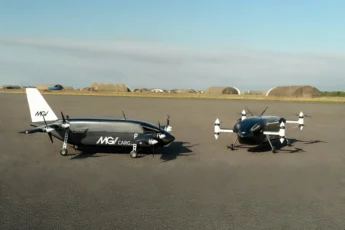As defence priorities shift towards scalable, survivable solutions for high-intensity conflict, One-Way Effectors (OWEs) have emerged as one of the most disruptive technologies of the decade. Offering precision strike capability at a fraction of the cost of traditional munitions, OWEs allow forces to project power deep into contested airspace—without the burden of retrieving or recovering the platform.
With the DSEI 2025 exhibition in London just around the corner, OWEs are set to dominate discussions around future lethality, affordability, and mass. MGI Defence’s latest platforms—TigerShark and SkyShark—reflect this shift, providing medium- and long-range strike capabilities in an expendable format optimised for the modern battlespace.
The High Cost of Traditional Precision Strike
For decades, precision strike has been synonymous with expensive and complex systems like the Tomahawk or Storm Shadow cruise missiles. These weapons offer long-range accuracy but come with eye-watering price tags—often exceeding $1 million per unit. Such costs severely limit stockpiling and operational tempo in protracted conflicts.
In high-intensity scenarios where dozens or even hundreds of strike missions may be required daily, traditional cruise missiles are simply too expensive to use at scale. Even well-funded militaries are beginning to feel the logistical and financial strain of maintaining sufficient inventories.
Moreover, these high-cost weapons often require:
- Complex logistical supply chains
- High-end launch platforms (e.g., warships, fighter aircraft)
- Political approval for every launch due to cost or risk
This creates a growing need for low-cost, autonomous strike alternatives—ones that can saturate enemy defences, be launched in volume, and deliver credible kinetic effects without breaking the bank.
Lessons from Ukraine: Mass Over Perfection
Few conflicts have demonstrated the evolving face of precision warfare more clearly than the ongoing war in Ukraine. There, the Russian Federation has extensively employed Shahed-131 and Shahed-136 drones—relatively unsophisticated one-way effectors believed to be supplied by Iran and produced under license locally.
Despite their limited sensor packages and crude construction, these drones have proven effective in:
- Striking infrastructure targets
- Forcing expensive air defence responses
- Saturating radar and ISR networks
Their low cost—estimated to be in the $20,000–$50,000 range—means they can be used liberally, even expendably. The result is a paradigm shift: the value of a strike platform is no longer just in its payload, but in its affordability at scale.
Western militaries are now scrambling to develop countermeasures, but they’re also re-evaluating their own strike capabilities. If adversaries can deploy dozens of expendable effectors for the cost of a single cruise missile, then parity demands a response not only in defence—but in kind.
What Are One-Way Effectors?
One-Way Effectors (OWEs) are autonomous or semi-autonomous aerial platforms designed for single-use missions. They are launched, navigate autonomously or via waypoints, strike their target, and are not expected to return.
They sit in the space between cruise missiles and reusable UAVs:
- More flexible than a missile, often with programmable flight paths and loitering capabilities
- Less expensive than a reusable drone, as there’s no need for landing gear, recovery, or post-mission servicing
- Faster to produce, enabling mass manufacture and agile deployment
This combination of affordability, autonomy, and precision makes OWEs ideal for:
- SEAD (Suppression of Enemy Air Defences)
- Infrastructure strikes
- Strategic shaping operations
- High-risk missions where aircraft loss would be unacceptable
Introducing TigerShark: Long-Range Strike, Low Unit Cost
Unveiled this year and recently profiled by Janes Defence in this exclusive, TigerShark represents MGI Defence’s response to the growing demand for long-range, affordable strike platforms.
With a range exceeding 500 km, TigerShark delivers deep-strike capability without the logistics burden or platform risk of conventional air-launched missiles. Key features include:
- High payload-to-cost ratio
- Low-RCS airframe, optimised for contested airspace
- Modular warhead options
- Rail-launch capability, from land or sea platforms
- In-flight navigation without GPS, enabling denied-area operation
Designed using lightweight composites and F1-inspired aerodynamics, TigerShark combines speed, range, and precision in an expendable platform that costs a fraction of legacy systems.
As Janes noted in their special report, MGI’s shift from elite motorsport to high-speed defence prototyping is accelerating innovation cycles and delivering real battlefield capability in record time.
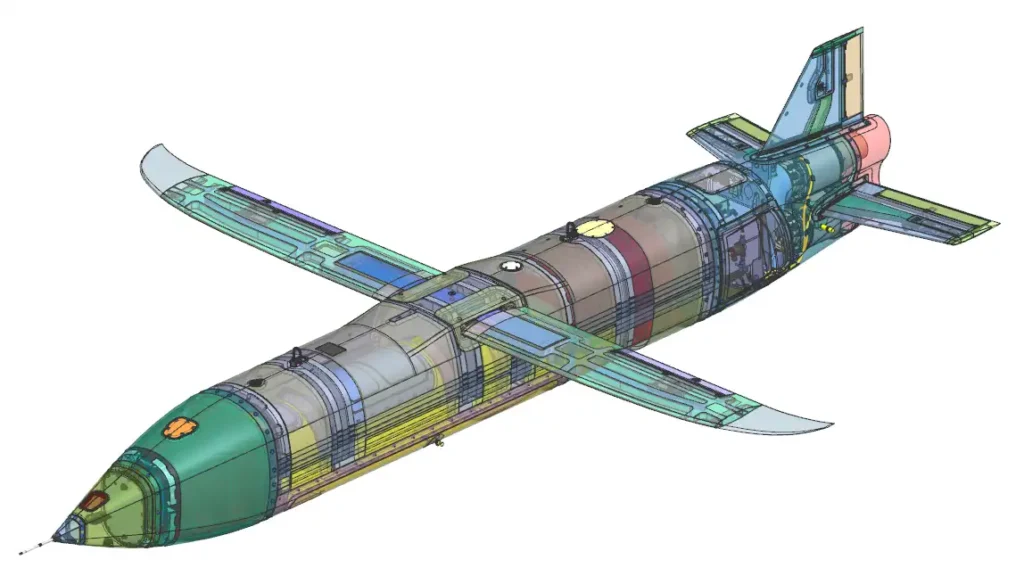
SkyShark: Tactical Expendable for Shorter-Range Strike
For commanders seeking closer-range precision in contested zones, SkyShark offers a compact, rail-launched solution optimised for tactical operations.
SkyShark delivers:
- A range of up to 100 km
- High agility and low radar cross section
- Swarm-launch compatibility, ideal for mass saturation
- Programmable waypoint navigation, with terrain following
Like TigerShark, it requires no runway or recovery system—making it ideal for forward deployment. It can be launched from a hidden ground launcher, maritime platform, or vehicle-mounted rail.
SkyShark fills the gap between traditional loitering munitions and strategic OWEs, offering commanders an agile, low-cost, precision option for shaping the battlespace.

Why Cost-Effective Effectors Matter
In a world of finite resources and expanding threat envelopes, one-way effectors offer an attractive new model for delivering kinetic effect:
- Deterrence through volume: High-quantity deployment changes adversary calculations
- Operational tempo: Readily replaceable platforms mean faster mission cycles
- Mission tailoring: Different warheads, ranges, and flight paths for different missions
- Survivability through expendability: No recovery means fewer risks, simpler designs
As nations re-arm in response to near-peer competition, platform cost is no longer a side note—it is central to lethality.
The Future of Precision at Scale
As 2025 unfolds, the next generation of OWEs is being shaped not by theory, but by necessity. Whether launched by NATO partners, Middle Eastern allies, or Indo-Pacific forces, one-way effectors are set to become standard elements of future air campaigns.
MGI Defence is proud to be at the forefront of this shift—bringing Formula 1 design speed and aerospace-grade manufacturing to a domain where agility, scale, and price point are critical.
Both TigerShark and SkyShark are designed for rapid production, modular customisation, and deployment in real-world environments—not just test ranges.
Explore the Platforms
For more information on MGI Defence’s one-way effector systems, visit:

